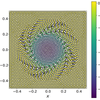


Physics professor at ETS Ingenieros Navales, UPM, Madrid
This profile is from a federated server and may be incomplete. Browse more on the original instance.


Physics professor at ETS Ingenieros Navales, UPM, Madrid
This profile is from a federated server and may be incomplete. Browse more on the original instance.